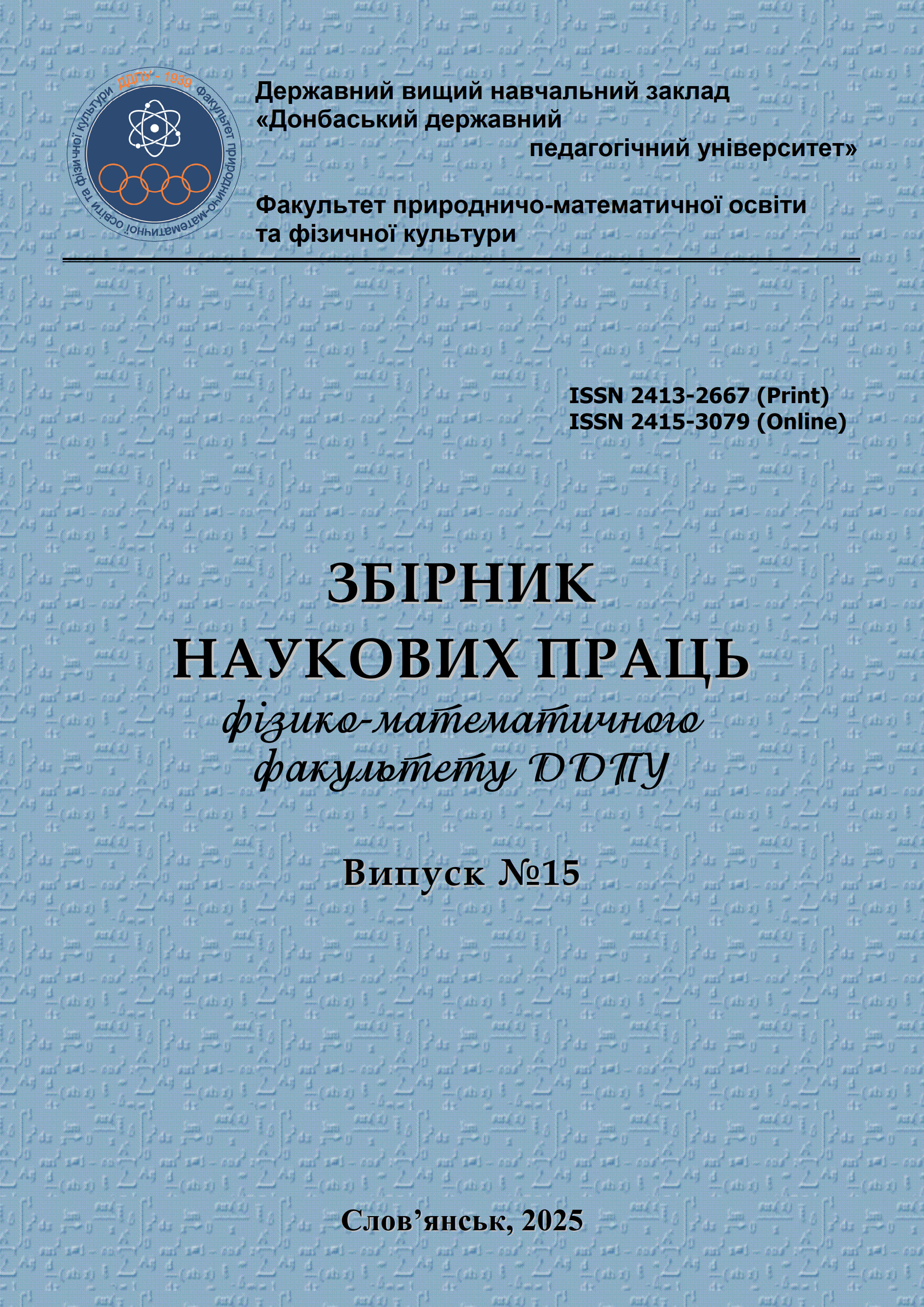ШТУЧНИЙ ІНТЕЛЕКТ У ВИКЛАДАННІ МАТЕМАТИЧНИХ ДИСЦИПЛІН
МЕТОДИКА НАВЧАННЯ МАТЕМАТИКИ В ЗАКЛАДАХ ЗАГАЛЬНОЇ СЕРЕДНЬОЇ ТА ВИЩОЇ ОСВІТИ
DOI:
https://doi.org/10.31865/2413-26672415-3079152025338348Ключові слова:
штучний інтелект, персоналізоване навчання, математична тривога, гібридні моделіАнотація
У статті наведено огляд досліджень 2020–2025 рр. щодо інтеграції ШІ у навчання математики: впливу адаптивних систем на персоналізацію, зниження математичної тривоги та підвищення мотивації, а також основних викликів: від втрати критичного мислення до «чорних скриньок». На основі висновків запропоновано рекомендації з впровадження пояснюваного ШІ, гібридних «ШІ+викладач» моделей і розвитку соціально-емоційних компетенцій.
Посилання
Gabriel, F., Kennedy, J., Marrone, R. et al. Pragmatic AI in education and its role in mathematics learning and teaching. npj Sci. Learn. 10, 26 (2025). https://doi.org/10.1038/s41539-025-00315-4
Tashtoush, Mohammad A.; Wardat, Yousef; Ali, Rommel Al; and Saleh, Shoeb (2024) "Artificial Intelligence in Education: Mathematics Teachers’ Perspectives, Practices and Challenges," Iraqi Journal for Computer Science and Mathematics: Vol. 5: Iss. 1, Article 20. DOI: https://doi.org/10.52866/ijcsm.2024.05.01.004
Kavitha, K., & Joshith, V. P. (2024). Pedagogical incorporation of artificial intelligence in K-12 science education: A decadal bibliometric mapping and systematic literature review (2013-2023). Journal of Pedagogical Research, 8(4), 437-465. https://doi.org/10.33902/JPR.202429218
Opesemowo, O. A. (2025). Artificial Intelligence in Mathematics Education: The Pros and Cons. In M. Khosrow-Pour, D.B.A. (Ed.), Encyclopedia of Information Science and Technology, Sixth Edition. Advance online publication. https://doi.org/10.4018/978-1-6684-7366-5.ch084
Mohamed, M.Z.B., Hidayat, R., SuhШІzi, N.N.B.,Sabri, N.B.M., Mahmud, M.K.H.B., & Baharuddin, S.N.B. (2022). Artificial intelligence in mathematics education: A systematic literature review. International Electronic Journal of Mathematics Education, 17(3), em0694. https://doi.org/10.29333/iejme/12132
Karen D. Wang, Zhangyang Wu, L'Nard Tufts II, Carl Wieman, Shima Salehi, Nick Haber caffold or Crutch? Examining College Students' Use and Views of Generative AI Tools for STEM Education URL: https://arxiv.org/pdf/2412.02653v1
Ramirez, G., Shaw, S. T., & Maloney, E. A. (2018). Math Anxiety: Past Research, Promising Interventions, and a New Interpretation Framework. Educational Psychologist, 53(3), 145–164. https://doi.org/10.1080/00461520.2018.1447384
Tapalova, O., & Zhiyenbayeva, N. (2022). Artificial Intelligence in Education: AIEd for Personalised Learning Pathways. The Electronic Journal of E-Learning, 20(5), 639–653. https://doi.org/10.34190/ejel.20.5.2597
Fitas, R. (2025). Inclusive Education with AI: Supporting Special Needs and Tackling Language Barriers . https://arxiv.org/abs/2504.14120
Kim, J. Types of teacher-ШІ collaboration in K-12 classroom instruction: Chinese teachers’ perspective. Educ Inf Technol 29, 17433–17465 (2024). https://doi.org/10.1007/s10639-024-12523-3
S.-W. Kim, “Development of a TPACK Educational Program to Enhance Pre-service Teachers’ Teaching Expertise in Artificial Intelligence Convergence Education”, Int. J. Adv. Sci. Eng. Inf. Technol., vol. 14, no. 1, pp. 1–9, Feb. 2024. https://doi.org/10.9708/jksci.2017.22.07.141
Altukhi, Zaid M. and Pradhan, Sojen, "Systematic Literature Review: Explainable AI Definitions and Challenges in Education" (2024). ICIS 2024 Proceedings. 11. https://aisel.aisnet.org/icis2024/lit_review/lit_review/11

